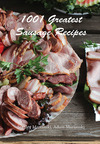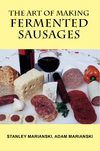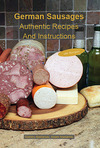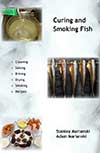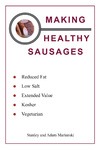Meats and Sausages
Emulsions
Understanding emulsions is important for making emulsified products such as hot dogs, frankfurters, bologna, or liver sausages. Fat cells rupture during comminution and release free fat. Fat does not dissolve in water or mix with it well. The purpose of emulsion is to bond free fat, meat, and water together so they will not become separated. When fat comes out of emulsion it will be lost during cooking which amounts to a higher cooking loss. Emulsions can be of different types:
- 1. Natural meat emulsion.
This is a natural emulsion where meat must form a matrix to hold the fat. The leaner the meat, the stronger matrix will be created. This matrix holds water, giving sausage its proper texture. Meat proteins are needed not only for their nutritional value but also for their contribution to the emulsification and binding of meat products. Lean meat contains myofibrillar and sarcoplasmic proteins which are of high quality. Their emulsification value and binding properties are excellent.
- Pork rind emulsion. Pork skins are precooked for about 1.5 hours in hot, simmering water and then chopped in a bowl cutter or food processor when still warm. About 1/3 of water, 1/3 pork skins and 1/3 back fat are combined to create emulsion. Such emulsion must be used quickly or cooled down and frozen for later use.
- Liver emulsion. The liver contains the natural emulsifying agent. Around 30% of the liver is added when making liver sausages.
- 2. Caseinate (type of milk protein) and soy-based emulsion.
A typical caseinate-based emulsion: 5 parts water: 5 parts fat: 1 part caseinate. A typical soy isolate-based emulsion: 5 parts water: 5 parts fat: 1 part soya isolate. When less than lean meats are used, the binding will still occur, providing enough exudate has formed. It may be further enhanced by lightly sprinkling meat surfaces with powdered gelatin. In addition, a variety of materials may be used to enhance binding:
- Soy protein isolate.
- Soy protein concentrate.
- Non-fat milk powder.
- Caseinate (milk protein).
- Carrageenan - comes from algae or seaweed.
- Egg white.
More information on emulsions can be found in emulsified sausages



